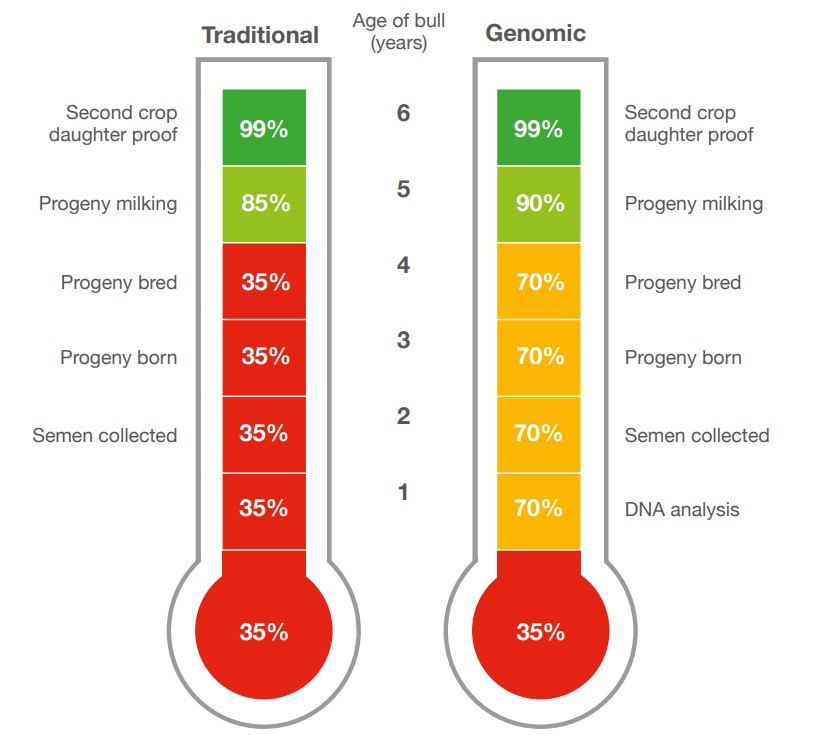- Home
- Knowledge library
- Reliability of dairy herd genomics
Reliability of dairy herd genomics
The reliability of genomic evaluations is an important consideration when using them to inform your breeding programme. This page looks at reliability in more detail.
Genomic proofs and their reliability
The reliability indicates how likely it is that the bull’s proof will change as more information becomes available. A genomic proof with a reliability of 65–70% could still drop or improve when further daughter information becomes available.
Genomic proofs have a higher reliability than traditional pedigree index calculations, as shown below.
Reliabilities over time for traditional and genomic evaluations for Holstein and Friesian bulls (other breeds will have around 55 per cent reliability in genomic stages 1–4)

The genomic proofs we produce have an identical layout to production and daughter-proven proofs, but they’re flagged with ‘G’ to indicate that the proof uses DNA and parent average information to estimate the animal’s genetic potential.
Genomically tested young bulls retain this reliability gain over traditionally tested bulls, even when first crop daughter production information is available. It’s only when second crop daughter production information is available that traditionally proven proofs close this gap in reliability.
Although genomic young bulls have a higher reliability than their traditional counterparts, you should take the same caution when using them across the herd.
We suggest using five or six genomic young bulls across your herd to ensure that if one of them changes significantly, his genetics will only contribute to a small proportion of your replacement heifers.
The graph below is a guide to the proportion of semen usage for a single bull at different levels of reliability.
Guide to proportion of semen usage for a single bull at different levels of reliability
Key: 33–55% poor, 65–75% less than ideal, 85–90% good, 95%+ excellent

The graph shows that you should use a traditional young bull on no more than 8% of your herd. This proportion increases to around 15% for Holstein genomic young bulls and further for first crop daughter-proven bulls. You should use second crop daughter-proven bulls on no more than half your herd.
Reliabilities for non-Holstein breeds will be somewhat lower because of the smaller size of the breed and informative bulls in the reference population.
Useful links
Find out more about dairy herd genomics
Topics:
Sectors:
Tags:

